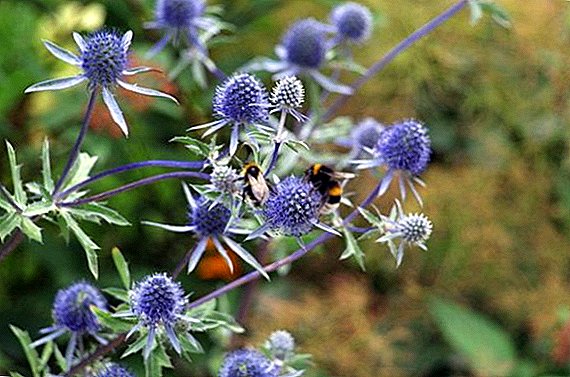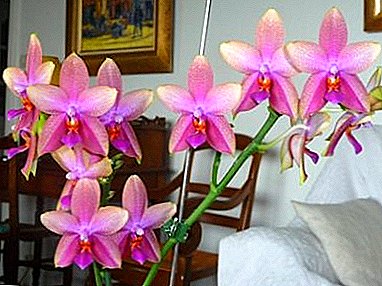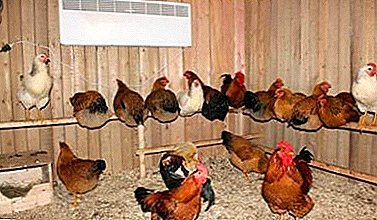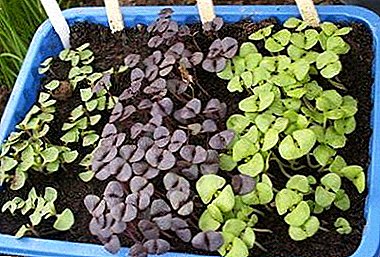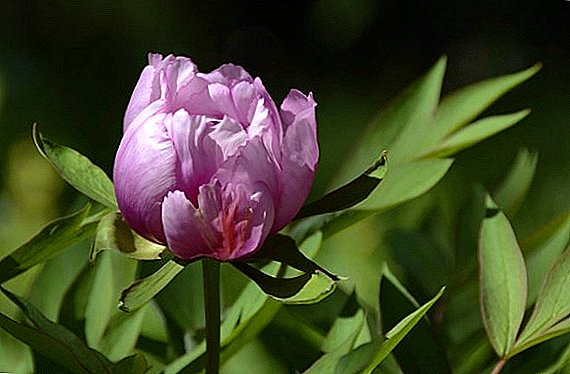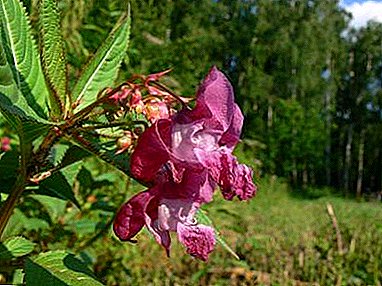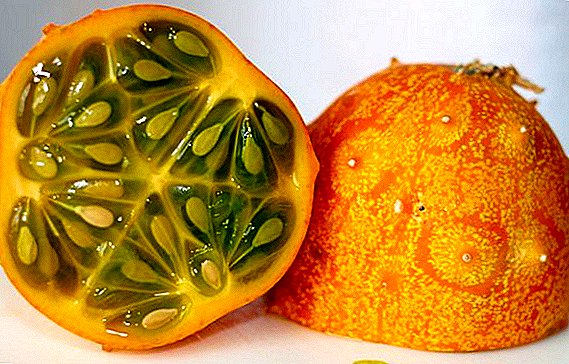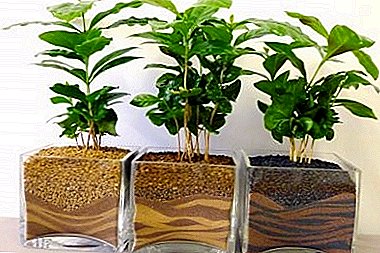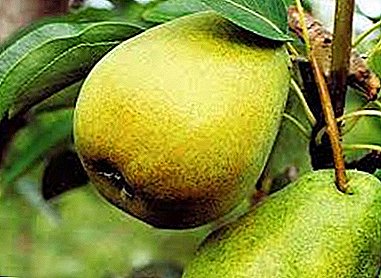
Not all varieties of pears exist as they were created by nature.
Most of them were wild representatives brought from forests.
And later, with the help of breeding, they became widely known and beloved varieties that have a lot of advantages. Pear Sverdlovchanka One of these varieties is a description, photo and reviews further in the article.
What kind of pears refers?
Sverdlovchanka is autumn-summer variety pears, depending on the region of cultivation. Sort winter hardy, high resistance to frost. To destination fruits are dessert.
By the summer belong to these varieties of pears: Severyanka, Fairy Tonkowetka, Chizhovskaya and Duchess.
Breeding history and breeding region
 In the Saratov and Sverdlovsk experimental stations using pollination "Lukashovka Fields"a mixture of pollen from several southern varieties was obtained this variety. Such authors as L. A. Kotov and G. V. Kondratiev.
In the Saratov and Sverdlovsk experimental stations using pollination "Lukashovka Fields"a mixture of pollen from several southern varieties was obtained this variety. Such authors as L. A. Kotov and G. V. Kondratiev.
Remember, some varieties for the winter must cover!.
Description variety Sverdlovchanka
Consider a variety of pear Sverdlovchanka, a description of the external characteristics of the tree and fruit.
Tree
Tree growth does not exceed average indicators. The crown is not very thickened, it is distinguished compact and pyramidal round shape. The color of the bark and skeletal branches is dark gray with a greenish tinge. The main branches stretch upwards and it is on their two-year increments that the fruiting is concentrated.
On the brown-green shoots there are no edges. The leaves are brilliant, saturated green color, their form is ovate-ovoid. The sheet plate is rather flat, its edges are notched. Long stalks and small saber stipules.
The flowers are white, medium in size, cupped. At one level with the pistils are the anthers. Flowering of this variety occurs at a later date.
Fetus
Fruits are smooth, regular round pear shape. Average fruit weight varies from 130 g to 180 g. Fully ripe pears green, with a slight blush, which manifests itself on the sunny side of the fruit. But in the bulk of the coating color is not present at all.
 Well pronounced subcutaneous spots, which are also painted in green. Seed chambers are closed, shallow and wide saucer, heart wide.
Well pronounced subcutaneous spots, which are also painted in green. Seed chambers are closed, shallow and wide saucer, heart wide.
Sverdlovchanka received a grade of dessert because of the sweet and delicate taste of the pulp, with a high content of juice. The fruit has a strong aroma, the flesh has an oily structure, practically without granules.
The following pear varieties can boast of excellent taste: Rogneda, Karataevskaya, Pamyati Zhegalova, Yanvarskaya and Krasulya.
The chemical composition of pear varieties Sverdlovchanka:
| Composition | amount |
|---|---|
| Sahara | 9,9% |
| Titrated acids | 0,2% |
On a five-point scale, the grade received score of 4.5 points.
A photo







Specifications
Cultivated variety is different good frost resistanceIt can withstand temperatures up to -38 ° C without damage.
But given the conditions of the Middle Urals, especially in its northern part, these indicators are considered average. It would be wiser to plant Sverdlovchanka on a winter-hard stock.
Pear varieties are distinguished by good frost resistance: Svetlyanka, Severyanka, Severyanka red-cheeked, Fairy Tale and Skorospelka from Michurinsk.
Start fruit ripening occurs in August in warm areas and may last until October, if the growing region is northern. If the removable ripeness of the fruit comes in the summer, the pears do not lose their presentation and do not crumble for very long. Fruits, taken in October, often ripen during storage.
 Sverdlovchanka not able to self-pollinated. For the ovary of the fruit on the site is recommended to plant other varieties of pear with different periods of flowering.
Sverdlovchanka not able to self-pollinated. For the ovary of the fruit on the site is recommended to plant other varieties of pear with different periods of flowering.
The young tree starts to yield early, already 3-4 year after vaccination. Annual yield increases rapidly.
The tree bears abundantly and regularly, with a yield of more than 200 kg / ha.
High yields are usually demonstrated: Oryol Beauty, Hera, Cosmic, Autumn Yakovleva and Noyabrskaya.
Planting and care
Before planting a tree, it should be well inspect for damage to roots or branches. Remove excess or damaged branches and roots, leaving only the largest.
Pear prefers sand and lime loam. It is on such soils that the Ural pears grow best. The abundance of black soil in this case will even be harmful.
Therefore, the special spread of Sverdlovsk and similar varieties received on the entire territory of the Nonchernozem belt down to St. Petersburg.
IMPORTANT: It is possible to plant a young tree both in the spring, and in the fall. But in the northern regions, spring planting is still preferable, since in the autumn in very cold climates the roots of a tree may not have time to settle down.
The place to choose is sunny and open. A pear grows better if it receives a sufficient amount of sunlight. The pit is prepared about a week before planting.
 Its size should be 70 cm depth and 1 m width. Soil in the pit itself need to loosen and drive a stake in the middle. Then a small hillock is filled with the soil of the upper layer of the earth mixed with fertilizers.
Its size should be 70 cm depth and 1 m width. Soil in the pit itself need to loosen and drive a stake in the middle. Then a small hillock is filled with the soil of the upper layer of the earth mixed with fertilizers.
A sapling is placed on top of a hillock and its roots are gently spreading in all directions. The root neck should not be lower than 5-7 cm from the surface of the earth. After the pit falls asleep and slightly compacted.
For a good and high-quality watering around the trunk you need to make a small ditch. Then shed planted tree two buckets of water and cover with mulch or humus.
REFERENCE: Until the seedling is fully rooted, it must be watered frequently during the month.
The pear is not very demanding for irrigation due to the presence of very long roots capable of extracting water from the ground even during periods of long lack of rain. Watering is carried out three times in summerNo more pears are needed unless during periods of severe drought.
After watering the ground around the tree, you need to loosen it a little to provide oxygen access to the root system. The rate of one-time watering is three buckets.
Feed it up if the growth of a young tree is delayed. Fertilizers must be applied from the second year after planting and in the summer months.
 Fertilizers such as peat and humus, which must first be mixed with the ground and then put into the trench.
Fertilizers such as peat and humus, which must first be mixed with the ground and then put into the trench.
You can prune a tree in autumn or spring. But in the Ural climate Sverdlovchanka pruned in springIn order not to freeze the tree in the fall, due to temperature features. In warm regions, pruning time does not matter.
IMPORTANT: Pruning in the summer is not recommended, because along with the branches, and part of the leaves is removed, which is bad for the health of the tree.
The crown is cut for its proper formation and better fruiting. Circumcision begins from the first year of landing and continues until the very death of the tree.
The basic rules of crown formation:
- All work should be carried out with a sharp pruner.
- Circumcision is carried out only in case of stable warm weather, otherwise the damaged tree may die in case of accidental frosts.
- A two-year sapling is cut at a distance of half a meter from the surface of the earth.
- The main trunk is shortened by a quarter.
- Annually thinned crown to avoid its thickening and to ensure the penetration of sunlight to all branches.
- The branches are cut under the ring, leaving no hemp.
- Spilov place covered with garden pitch or paint.
- Given the high frost resistance of the Sverdlovsk region, it is worthwhile to take care only of a sufficient amount of snow near the roots. Covering shtamb and crown even in the northern regions does not make much sense.
Diseases and pests
Sverdlovchanka has great resistance to various diseases, including to //selo.guru/ptitsa/bolezni-p/gribkovye/parsha.html, rust and bacterial burn.
Therefore, preventive measures will be quite enough.
It is necessary to follow the basic established rules for growing a healthy tree:
- Mandatory clearing of the root circle from weeds significantly reduces the multiplication of viruses and parasites.
- Regular digging of the soil also improves its quality.
- The application of mineral fertilizers changes the composition of the soil, making it impossible for the habitat of pests and pathogens.
- Timely collection and burning of fallen leaves, and the destruction of the carrion.
- Prevention measures also include spraying with pesticides, insecticides and fungicides. Adjust the dose and quantity of drugs should be especially careful. Excess doses become dangerous for plants and humans.
Resistance to diseases have: Bere Russkaya, Chuddesnitsa, Feeriya, Silent Don and Talgar beauty.
Sverdlovchanka is an excellent option for novice gardeners, because of its simplicity. And one of the few varieties that can grow at very low temperatures.


